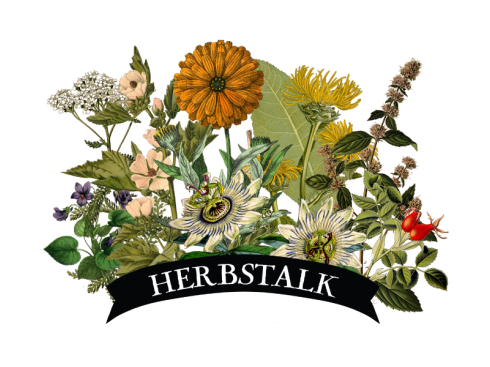Making wild salad can easily become a cherished spring ritual. It’s relaxing and fun, and I’d say that collecting your dinner is a medicinal act in itself, not to mention the benefits of eating it! I like to grab a big basket and lay out my harvest, mostly for the aesthetic value, but a paper or cloth bag will do just fine. Enjoy the quiet, meditative act of harvesting, and the special opportunity to observe the plant’s features, characteristics, and habitat of choice. The trick to making a palatable wild salad is to collect these plants when they are young, in the spring. As the days get warmer and the plants get older and begin to put more of their energy into flowering, many of these species become too bitter or astringent for most palates. Hence, they are a delicacy to be enjoyed each spring!
Wild Salad
Here’s how to make it:
Wild Salad
1/2 Organic Mesclun Greens
1/2 Wild!
For the wild part here’s what I like to use, in any combination…I usually go pretty heavy on the chickweed and dandelion…..
Wild Strawberry leaf (Fragraria vesca)
Dandelion leaf + flower (Taraxacum officinalis)
Oxeye Daisy leaf (Leucanthemum vulgare)
Field Garlic leaf (Allium sp.)
Yellow Dock leaf (Rumex crispus)
Wild Carrot leaf (Daucus carota)
Bee Balm young tops (Monarda didyma)
Violet leaf + flowers (Viola sp.)
Cleavers Herb young tops (Gallium aparine)
Garlic Mustard leaf (Allium petiolata)
Chickweed herb (Stellaria media)
Day Lily young shoots (Hemerocallis sp.)
Plantain leaf (Plantago lanceolata or P. major)
Chicory leaf (Cichorium intybus)
Mugwort young tops (Artemesia vulgaris)
Sheep Sorrel leaf (Rumex acetosella)
Mix all together, add in your favorite dressing, and enjoy!
Uses:
In addition to being delicious and incredibly good for you (many of these species are off the charts in vitamins and trace mineral content), wild salad is gently detoxifying, as many of these herbs are classified as liver tonics and/or alteratives, also known as blood purifiers. I consider wild salad to be a spring tonic. The bitter and sour flavors stimulate our digestion and help the liver work optimally to clear the blood of toxins and other unwanted substances. On a side-note, the liver and gallbladder also happen to be associated with spring in Traditional Chinese Medicine, definitely not a coincidence! And alteratives, or blood purifiers, help the body break down and remove metabolic waste, both through our digestive system and urinary system, and are often considered to be all-around “tonics” that promote vitality and good health, so eat up!
Basket o’ herbs
It’s easy to take advantage of the wide distribution of many of these edible plants. Chances are, you’ve got some growing within walking distance of your home, even if you’re in the city! It is of course important to consider a few guidelines anytime you’re doing any wildcrafting. First, stay away from roads! I try to be at least 25 feet away and do my best to avoid gathering from roadsides at all for obvious reasons. Other areas to stay away from are along railroad tracks, areas often used for dog walking, and areas where you suspect the soil may be contaminated. And lastly, be sure you know what you are harvesting! Try to attend local herb and edible plant walks in your area and get to know your field guide. Peterson’s makes a nice Edible Plant guide. Be sure to see the list of resources included at the bottom of this post. So, where to harvest? Local organic farms and CSAs are a great place to start- they will be psyched that you want to eat their weeds! The same goes for any gardeners you know who use organic methods…they will be happy you want to dig up their dandelion. Many of these plants like recently disturbed areas and edges and you’re more likely to find them co-habitating with humans than deep in the forest (which is potent food for thought when you think about it). Also, searching for and finding favorite patches of wild edibles is part of the mystique of foraging…so enjoy the hunt!
Favorite Resources:
Identifying and Harvesting Edible and Medicinal Plants in Wild (and not so wild) Places
By “Wildman” Steve Brill
Botany in a Day
By Thomas J Elpel
Uses of Plants by the Indians of the Missouri River Region
By Melvin R Gilmore
How Indians Use Wild Plants for Food, Medicine & Crafts
By Frances Densmore
Invasive Plant Medicine
By Timothy Lee Scott
Edible and Useful Wild Plants of the United States & Canada
By Charles Francis Saunders
Stalking the Wild Asparagus and Stalking the Healthful Herbs
By Euell Gibbons
Peterson’s Field Guide to Edible Plants



 RSS Feed
RSS Feed